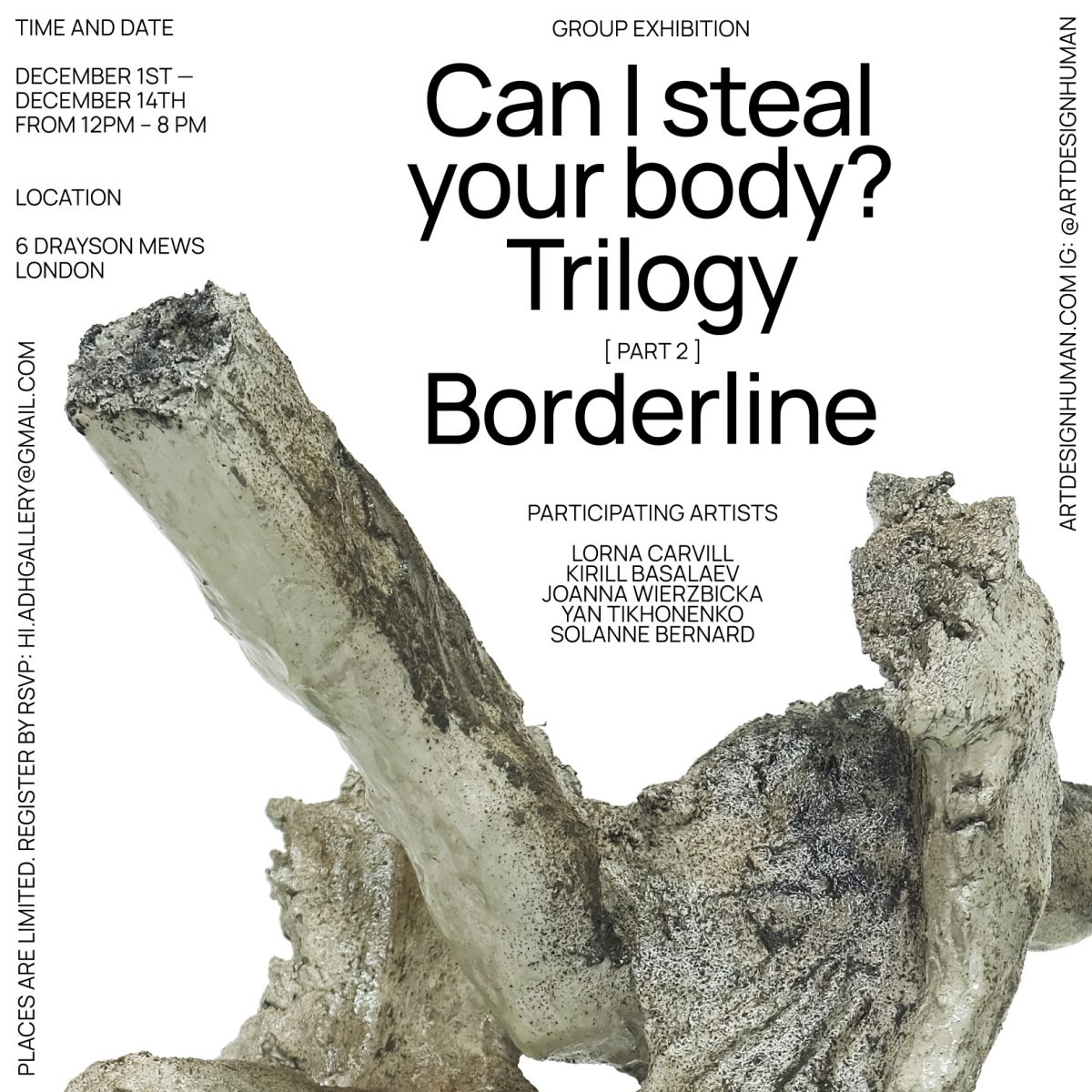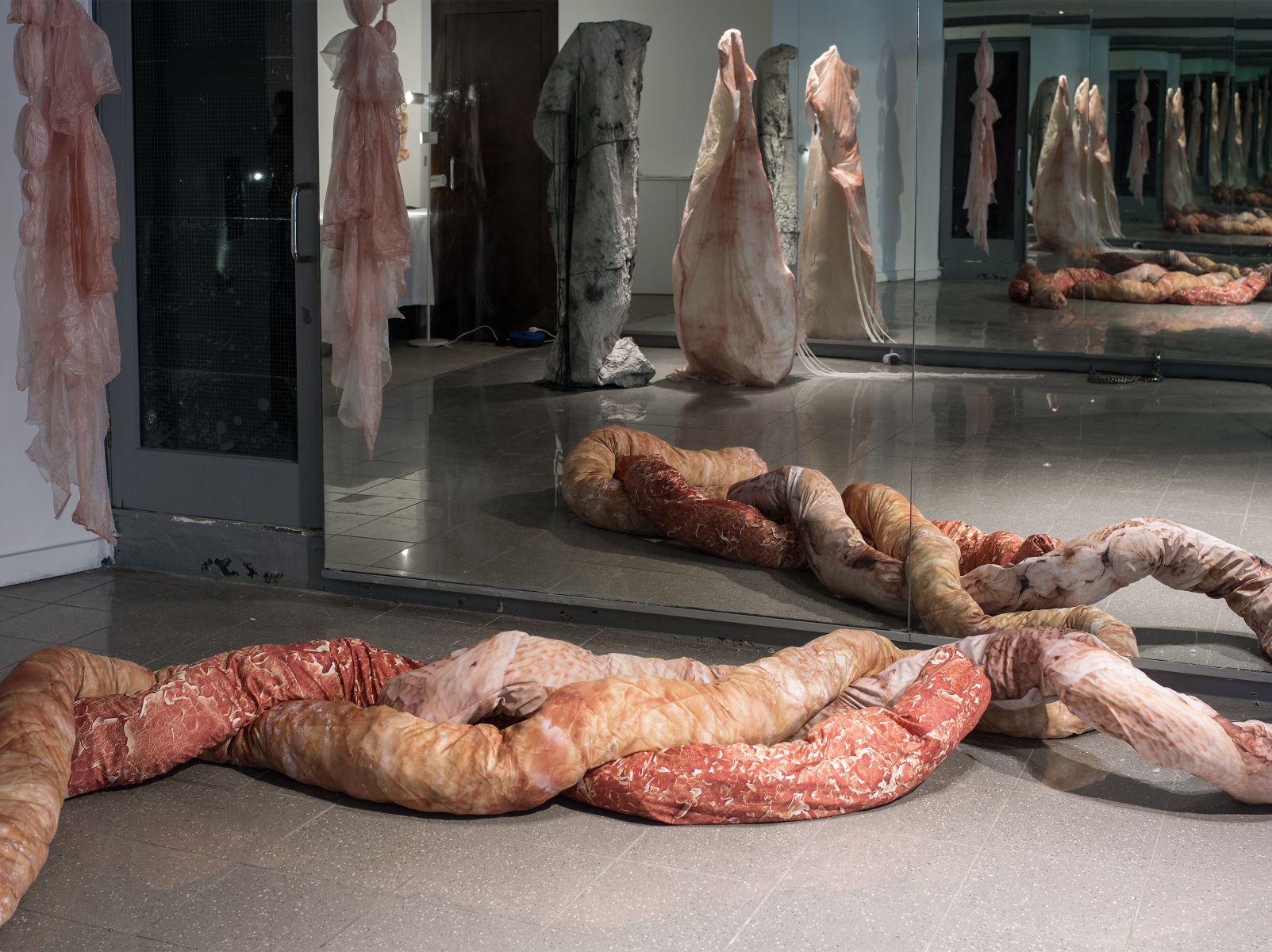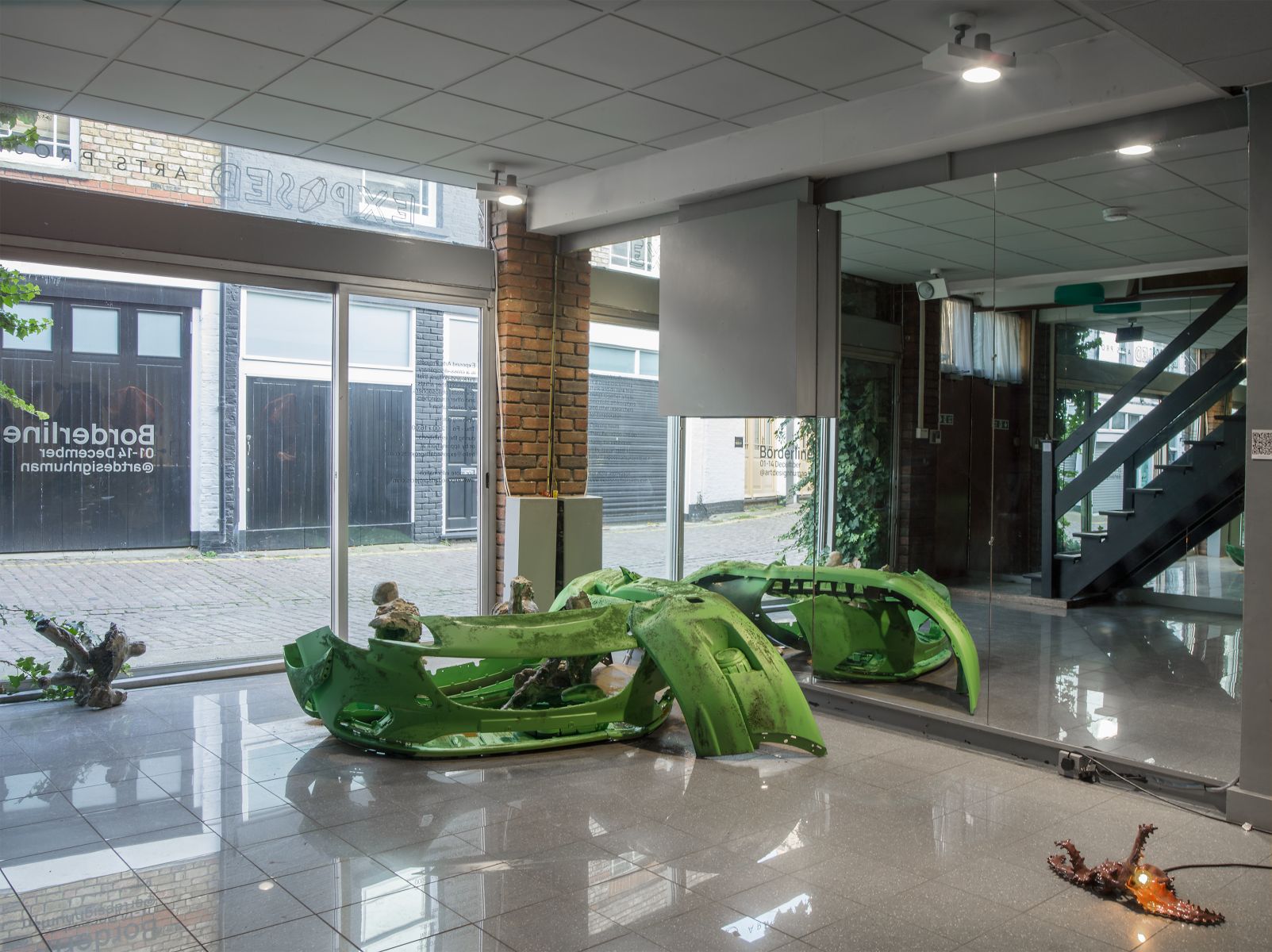
 +
+
1st December – 14th December 6 Drayson Mews, W8 4LY, London
ADH Gallery is delighted to present the second part of the Can I Steal Your Body? trilogy, which delves into the intricate connection between artists and objects and explores profound motivations that drive creators to bring their visions to life. The first part focused on the act of transforming a fleeting feeling, a need or a desire into a tangible object – an artwork.
Borderline exhibition brings together the work of 5 artists who explore equally the artist’s body and body of artwork. The author’s thought and intellectual intention are transformed into the corporeal and material, into something that can be depicted or felt with the touch of a fingertip. The artist converts the world into an object, giving it his body in return. All of these factors are important when discussing an exhibition, because the artist brings his understanding of the world.
Lorna Carvill examines painting as a material object with fluidity, porousness, and trans-corporeality, asking where the bodily boundaries are and why they should be determined by the skin. The artist seeks descriptions of how we live in our bodies, what is running through and across them, and what other actants have affected us. She uses optical and compositional elements such as form and colour to express the evocative potential of the tactile, sensual and physically affective elements of the artwork.
Kirill Basalaev’s sculptures from the BodyResemblance series, dug out of the ground and exposing a bound skeleton, have to reinvent a presumed lost form. The trauma in this case is not collective, but personal. The whole monolith of memories is itself transformed by the passage of time and disintegrates to distortion. The alienation of the artist from his or her own experience originates from these changes.
The artistic research of Joanna Wierzbicka is centred around the experience of embodiment, the materiality of our bodies, and the consciousness of having and being them. The artist is interested in the potential of our bodies as navigators in the chaos we are surrounded by. Personal, community, social, ecological, and political transformations are interdependent – our embodiment is affected and can affect.
Yan Tikhonenko explores the body primarily through his materials. Using the earth as the main medium for the artworks, he brings to the surface what we usually don’t notice. From earth everything comes and everything returns to the ground. This position suggests that everything is equal: material, artist and artwork.
Merging the imagery of abstracted body parts and plants into hybrid sculptural forms, Solanne Bernard creates her works predominantly with ceramics and silicone. The hybridity of works helps highlight the roles that the fluidity and intertwinement of things together have in constructing a sense of unease and visceral displacement. In this way, the work explores how subjectivity can oscillate between human and object, pushing the material to see what it can do as subject and finding ways to act out the complexities between desire, violence and disgust.
On the other side of the artwork is the viewer. Eager, exploring, demanding and penetrating, these emotions are also defined through its relationship with the body. It is important to realise that what the artist sees with his eyes is transmitted to the viewer: from eye to eye, from body to body. Artworks are always between two bodies that vibrate and try to merge.



